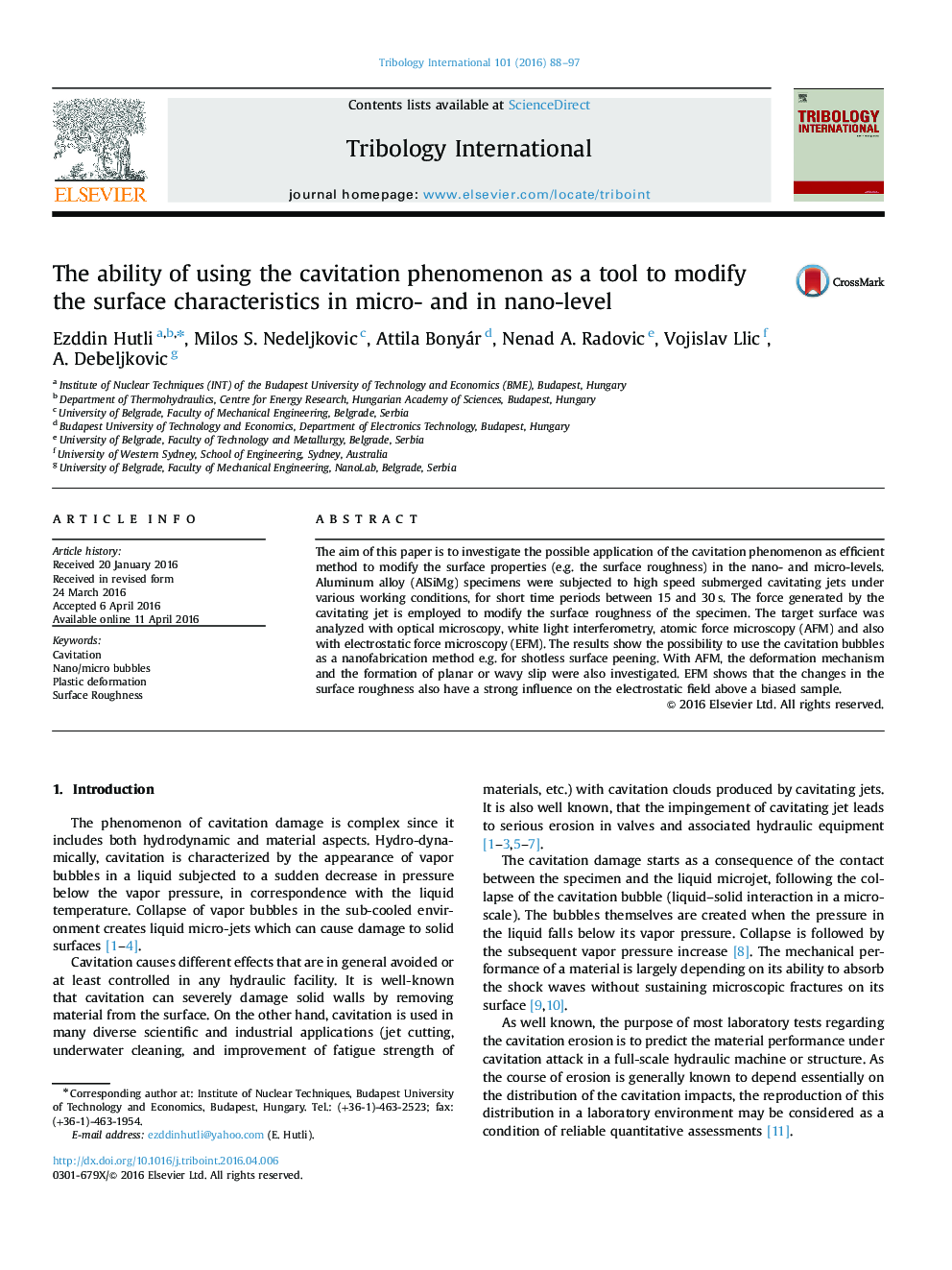| Article ID | Journal | Published Year | Pages | File Type |
|---|---|---|---|---|
| 7002468 | Tribology International | 2016 | 10 Pages |
Abstract
The aim of this paper is to investigate the possible application of the cavitation phenomenon as efficient method to modify the surface properties (e.g. the surface roughness) in the nano- and micro-levels. Aluminum alloy (AlSiMg) specimens were subjected to high speed submerged cavitating jets under various working conditions, for short time periods between 15 and 30Â s. The force generated by the cavitating jet is employed to modify the surface roughness of the specimen. The target surface was analyzed with optical microscopy, white light interferometry, atomic force microscopy (AFM) and also with electrostatic force microscopy (EFM). The results show the possibility to use the cavitation bubbles as a nanofabrication method e.g. for shotless surface peening. With AFM, the deformation mechanism and the formation of planar or wavy slip were also investigated. EFM shows that the changes in the surface roughness also have a strong influence on the electrostatic field above a biased sample.
Related Topics
Physical Sciences and Engineering
Chemical Engineering
Colloid and Surface Chemistry
Authors
Ezddin Hutli, Milos S. Nedeljkovic, Attila Bonyár, Nenad A. Radovic, Vojislav Llic, A. Debeljkovic,
